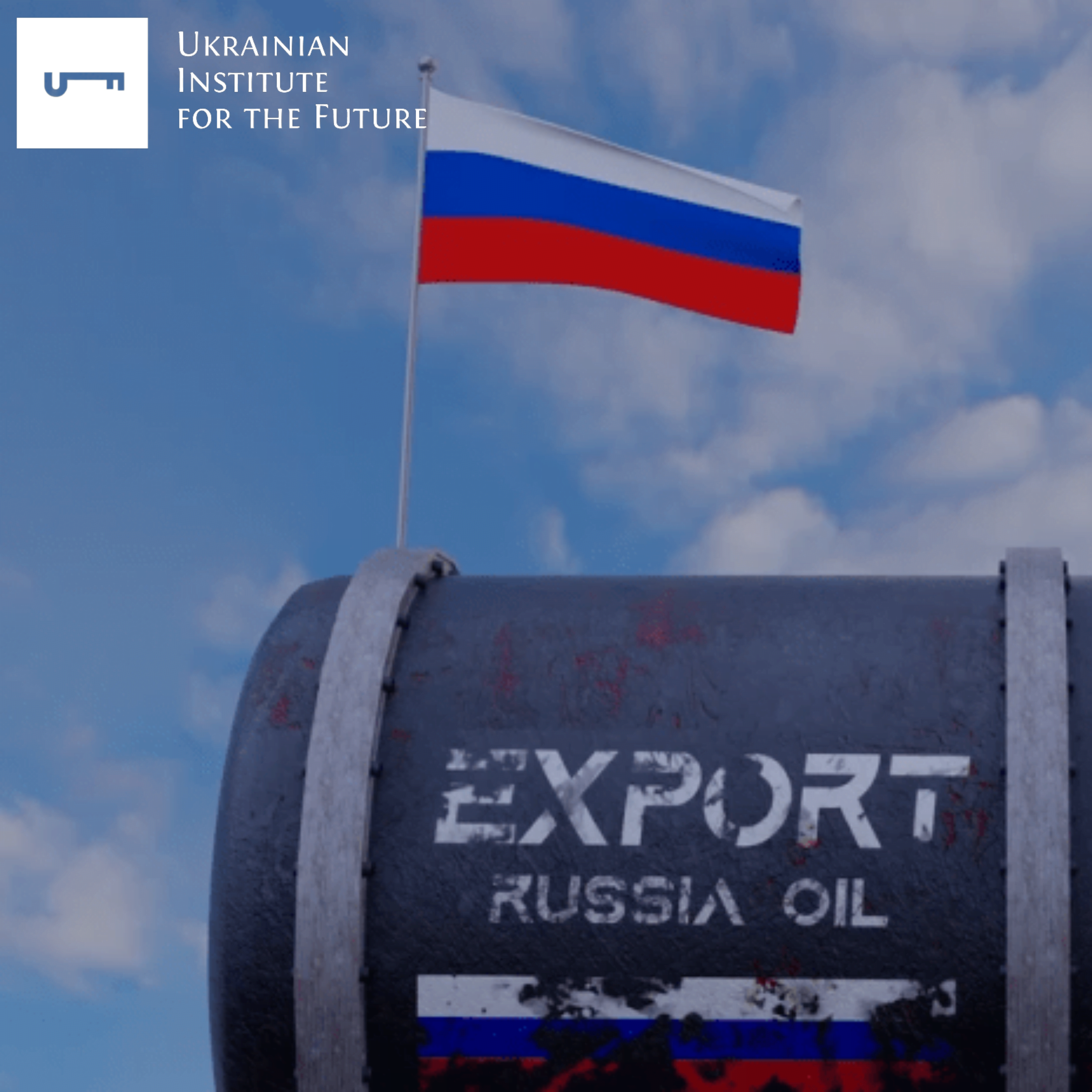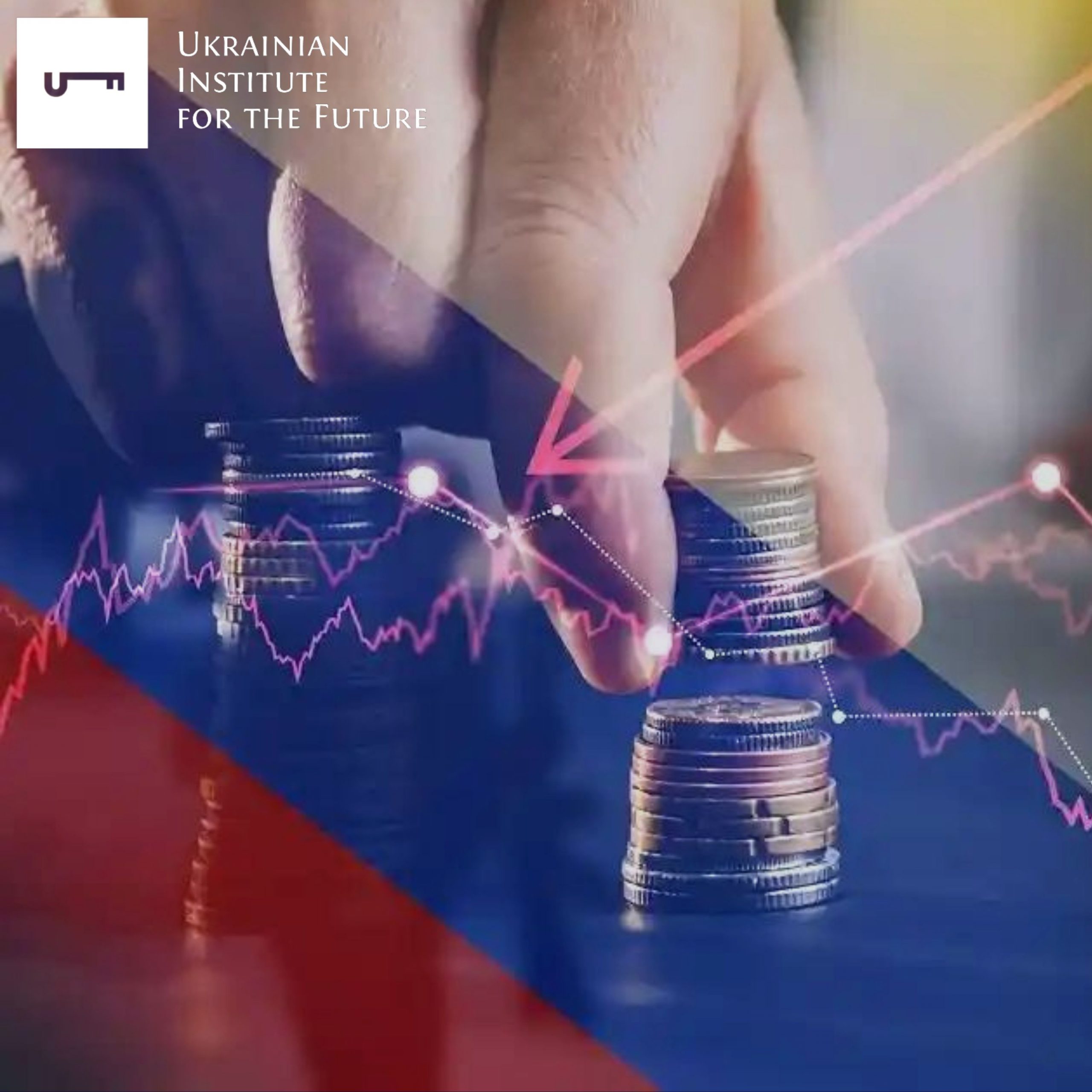It would seem that sanctions by a coalition of Western countries were supposed to make the war economically unprofitable, if not for Putin himself, then for his inner circle, which “is fed” mainly on oil and gas.
Today, the figures of the federal budget and the balance of payments for January-February 2023 demonstrate that the oil and gas revenues of the Russian Federation are really declining: budget revenues from oil and gas for 2 months of 2023 fell by 46% y/y, the current account balance decreased by 3 times y/y. According to the Federal Customs Service, exports from the Russian Federation in monetary terms in January 2023 decreased by 28% y/y.
It is logical that in an ever-decreasing pie, the pieces of all participants should decrease, but in practice, it happens differently: while some strata (mainly the middle layer) suffers losses in the form of a reduction in real disposable incomes, other groups of people receive their war dividends.
There are at least two segments where the main benefits of businessmen loyal to the regime can be concentrated:
- Oil export from Russia
- Import substitution
Import substitution
Let’s start with the second one because here everything is clearer and more obvious: foreign companies left Russia en masse in 2022 (even without any sanctions), providing opportunities for Russian manufacturers to increase their market share and occupy new niches. Another issue is that these opportunities are severely limited by decreasing private demand – the real disposable income of the population in Russia has been declining for the past 9 years and is now at the level of 2012-2013. The dropping private demand has so far been able to be replaced by public demand, including due to the war and the high workload of the military-industrial complex, which largely explains such a modest decline in Russia’s GDP in 2022 (by only 2.1%compared to 7-10% expected in March 2022).
In addition to the fact that foreign companies left Russia, the Russian authorities forced some of them to sell their assets at a low price, threatening nationalization. McDonald’s, Starbucks, Renault, Kinross Gold, Bunge, Reebok, Schneider Electric, and many others were sold in this way. The new owners received real assets in the form of premises, workshops, and warehouses for relatively little money. According to Russian analysts, the total discount on the sale of real estate by foreigners in 2022 is the 1st quarter. 2023 amounted to 50 billion rubles, the discount ranged from 20-30% of the market price. This is the benefit that the Russian businessmen have received.
Now another draft law is being prepared to “support domestic producers” – the so-called draft law “on Russian shelves”. Its task is to limit the number of imported products in stores and, accordingly, increase sales of locally produced products. So far, the question of the criteria for Russian production remains open, for example, what can be the share of foreigners in the company, etc.
If the law is passed, then another wave of foreigners leaving the Russian Federation is quite likely to happen (this time not so much voluntary as forced), followed by the sale of their stakes (shares in the business), again at a discount.
Oil export from Russia
Since December 2022, Russian oil has been subject to sanctions in the form of a ban on seaborne export to the EU and a price cap set by the EU and the G7 ($60 per barrel is the price cap above which Western logistics and insurance companies cannot service Russian ships with oil). Similar restrictions have been introduced on Russian oil products since February 2023 (price cap – $100 and $45 per barrel for different types of products).
The Western coalition’s logic is not to limit the physical volumes of Russian oil supplies to the world market (in order to prevent a shortage and a sharp rise in prices), but to limit its cost and, accordingly, Russia’s income.
According to the data published by the Russian Ministry of Finance, we see that budget revenues from the sale of oil and gas have indeed been declining significantly since December 2022.
But here it is important to understand how tax revenues to the budget are calculated. The mineral extraction tax and the export duty, which form the main part of the budget’s oil revenues, were calculated until March 2023 (inclusive) based on the cost of Urals oil. Quotes of this brand are provided by Western pricing agencies, calculated and have recently nothing to do with the real price at which Russian oil is sold.
In January-February 2023, the average price for Urals oil, which the Ministry of Finance used to calculate the tax base, was $49.5 per barrel (in January-February 2022 it was $89 per barrel). For comparison: at the same time, Brent crude, for example, was trading above $80 per barrel, while the OPEC oil basket averaged $82 per barrel.
In February 2023, the Ministry of Finance changed the procedure for calculating the price of oil for taxation, and from April 2023 it is determined at the level of Brent quotations minus the discount (the discount will be $34 in April, $31 in May, $28 in June, and $25 from July). But let’s leave this out of the scope of this study.
So, thesis number 1 – we cannot draw conclusions about the real selling prices of Russian oil and, accordingly, the income of Russian companies, using the data of the Ministry of Finance of the Russian Federation.
In order to assess how much Russian oil is actually sold for, let’s look at the statistics of the leading countries to which Russian oil flows have been redirected since the beginning of the full-scale invasion of the Russian Federation into Ukraine: China and India.
Comparison of prices for Russian oil (imports of China and India from the Russian Federation) with the price of Brent crude oil, USD/barrel

Thus, in December 2022, the selling price of Russian oil to India and China was at the level of the spot price of Brent oil – about $80 per barrel, in January the average price was $74 per barrel, there are no February data on India yet, Russian oil is delivered to China in February was also sold at an average of $74 per barrel.
There are also quotes from another pricing agency (Global Platts), not the one used by the Ministry of Finance to calculate the tax base, and according to it, in February 2023, Russian oil was sold in Indian ports at a price of just over $60 per barrel.
According to the calculations by the Institute of International Finance at Columbia and California Universities, Russian oil averaged about $74 per barrel during the four weeks following the embargo. Oil exports from Pacific ports to key destinations such as China were even higher, averaging $82 per barrel. It is worth noting here that a significant part of Russian oil is delivered eastward through a pipeline to China and through the port of Kozmino, which is officially above the ceiling – $65-75 per barrel (on FOB terms).
Thus, thesis number 2 – the real selling prices of Russian oil in the Asian direction range from $60-80 per barrel (January-February 2023).
The conclusion that can be drawn based on this information is that some part of the money missed the Russian budget, namely the difference between the price of the actual sale of oil ($60-80) and the indicative price with which taxes were calculated ($49.5), multiplied by the rates taxes, and “settled in the pockets” of the oil companies.
As for the volume of oil sales, the picture so far looks quite positive in terms of Russian suppliers. For example, according to Refinitiv Eikon, transhipment volumes in the Mediterranean for deliveries to Asia increased by 8 times in January 2023 compared to December 2022. The volumes of oil that are subject to the European embargo have largely been redirected to China and India.

How Russian oil is transported.
The transportation of Russian oil is another grey area, which is currently opaque, not controlled by anyone, and therefore opens up opportunities for various manipulations.
After the leading Western companies refused to transport and insure Russian oil (at a price above $60 per barrel), an alternative was formed in a short time – a fleet of tankers that do not belong to Western coalition companies and, accordingly, can carry Russian oil. In 2022, the used tanker market grew sharply, with resales up 55% compared to 2021. In 2023, the maximum volume of new tanker construction since 2013 was recorded.
According to market participants, Russia can use about 360 tankers to transport its oil, while its real need to service exports in 2023 is about 200 tankers.
There was also information on the market about the acquisition by Russian companies of more than 100 tankers to organize a “shadow fleet” for transporting oil. These companies are registered not in Russian jurisdiction, but in Hong Kong, and Dubai (probably in other offshore zones). For example, market participants estimate that since February 2022 more than 30 Russian trading companies have been opened in Dubai, some of them with new names.
These oil trading companies are so-called laying companies – legal entities that sell oil from the Russian Federation and which, in all likelihood, have registered oil tankers.
Thus, thesis number 3 – a “shadow fleet” is used to transport a significant amount of oil from the Russian Federation, most of which, with a high degree of probability, belongs to oil companies registered abroad. Considering the decision-making system in the Russian Federation and the control of petrodollars, it can be argued that Putin’s familiar entourage controls the tanker fleet.
Thesis number 4 – opaque logistics allows oil traders to bypass the price ceiling and accumulate profits:
- the real freight rates in the current conditions are unknown (and everything can be attributed to the high cost of transportation, thus bypassing the price cap, and declaring the oil sale price is less than $60);
- oil can really leave the Russian Federation at a big discount (in relation to world quotes), and already from offshore, it is sold at a price of $65-75 per barrel (and possibly even higher). This, by the way, allows continuing to use the services of Western insurance and financial companies to service oil operations.
There is no particular doubt that the Russian authorities are aware of all the schemes for earning money for companies-laying companies, moreover, it is most likely that this is done with the connivance of the regime in order to create such an “oasis” where free cash flows are consolidated outside of Russia that can be used for a variety of purposes, such as:
- for purchasing sub-scanned goods, such as microchips, semiconductors, aviation parts, etc. (parallel imports are another point where businessmen of Putin’s entourage can earn money).
- for financing the budget deficit (if such a need arises), in the form of a voluntary contribution, similar to what was offered to large businesses in February 2023.
Thus, despite all the difficulties in which the Russian economy found itself after the Russian invasion of Ukraine and the imposition of sanctions, for individual Russian businessmen around Putin, an opportunity has opened up to capitalize on the war and the consequences associated with it. This includes participation in oil supply chains, the import of sanctioned goods, and “forced” import substitution. Given that this happens with the consent of those who control power in the country, we can consider these preferences as payment for loyalty to the regime.
For reference: according to the Bloomberg Billionaires Index, since the beginning of the year, the wealth of Russia’s richest people has increased by $13.2 billion. The founder of Lukoil, Vagit Alekperov, has earned the most – his fortune has increased by $3.2 billion to $18.5 billion.




